- Traders await US economic data to justify strongest monthly stock advance in 3 decades
- Oil rebound slows
- Bitcoin close to all-time high
Key Events
The most powerful global, monthly rally in three decades, which on Tuesday propelled the Dow Jones to a historic high, took a breather on Wednesday as futures on the Dow, S&P and Russell 2000 traded lower ahead of the release of a string of US economic data. NASDAQ futures bucked the trend as the cyclical rotation out of tech shares reversed.
Markets are hoping today's releases—which include weekly jobless claims and new home sales—will confirm signs of an economic recovery, to support the recent rally in risk assets.
Global Financial Affairs
In Europe this morning, the Stoxx 600 Index was lower despite the European Union announcing it has secured a deal with Moderna (NASDAQ:MRNA) to purchase 160 million doses of its potential COVID-19 vaccine. The deal is the sixth of its kind for the EU—it has already inked deals with BioNTech (NASDAQ:BNTX), Johnson & Johnson (NYSE:JNJ), CureVac (F:5CV), AstraZeneca (LON:AZN) and Sanofi (PA:SASY)
Gains in defensive utility stocks and bank shares failed to do enough to lift the pan-European index. Bank shares advanced despite belonging to the category of stocks that have lagged due to a flattening yield curve, leaving them small profit margins during the coronavirus pandemic. Financial equities were in demand after a report was released noting that the ECB may lift its ban on bank dividends in 2021, provided their balance sheets were robust.
Earlier in Asian trade, indices were mixed. Australia’s ASX 200 gained 0.6%, hitting a nine-month high as US political uncertainty abates. The Australian dollar retreated after touching its highest level since December 2018.
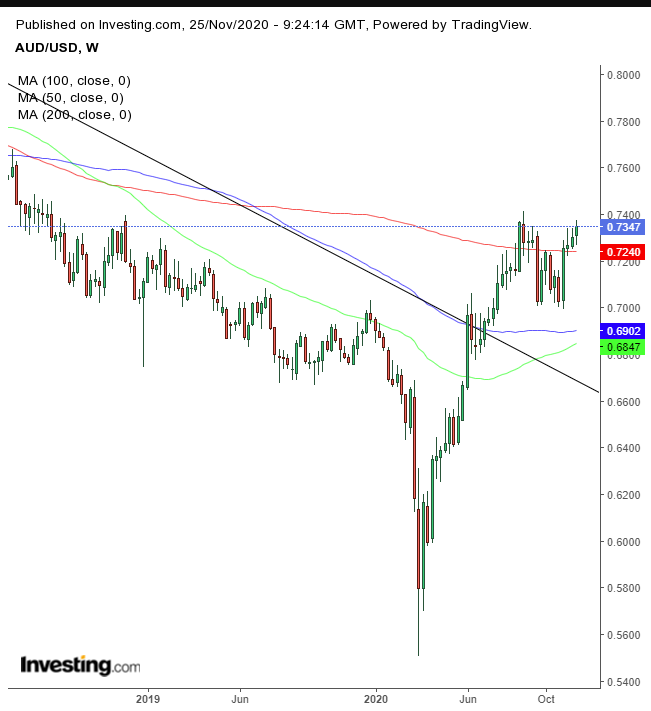
The Aussie is still up for the fourth consecutive week, after overcoming the 200-week MA.
China’s Shanghai Composite underperformed the region. The index fell 1.2% and suffered its steepest intraday selloff in almost a month, as electric vehicle stocks fell on news of a government investigation into the sector.
Hong Kong’s Hang Seng increased 0.3% on the news it is linking funds with China, bridging between investors from one of the best performing markets in the world and the rest of the world.
On Tuesday, during the New York session, US stocks jumped following news that the transition to the Biden administration would finally be allowed to begin, removing some political uncertainty. The announcement that President-elect Joseph Biden would be nominating former Federal Reserve Chairman, Janet Yellen as hisTreasury Secretary increased confidence yet further.
The VIX edged higher.
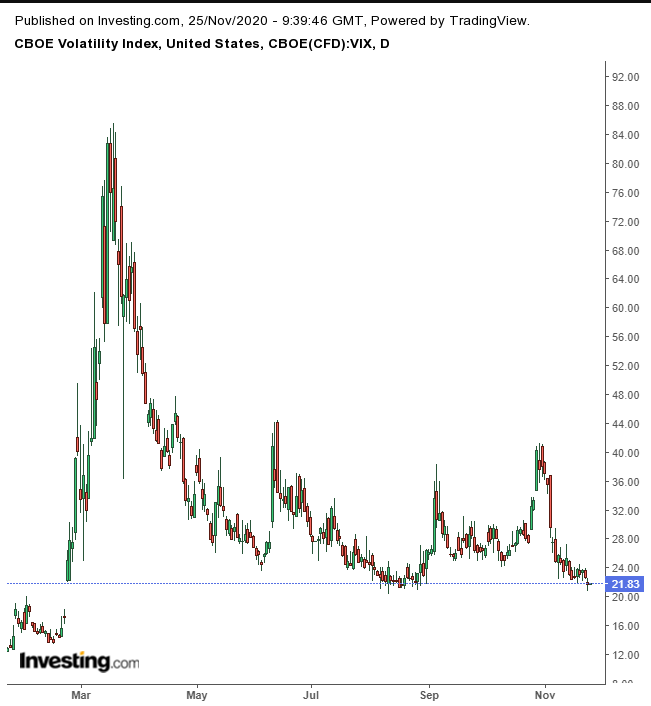
On Tuesday, the volatility index came the closest since August to entering the rising gap caused by the pandemic’s initial selloff.
Yields on 10-year Treasuries slowed after Tuesday's advance.
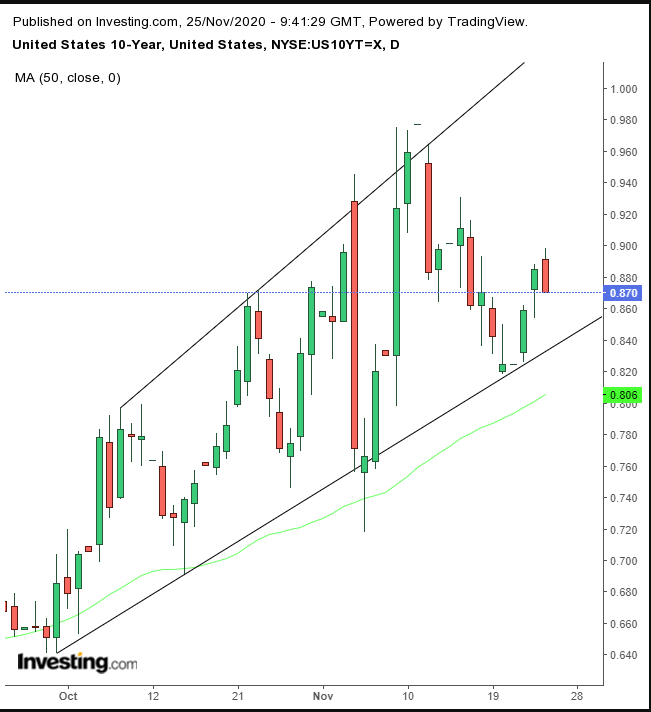
Rates are trading near the bottom of a rising channel.
The dollar fell for a second day, to the lowest since April 2018, but bounced back, finding support by the Aug. 1 hammer.
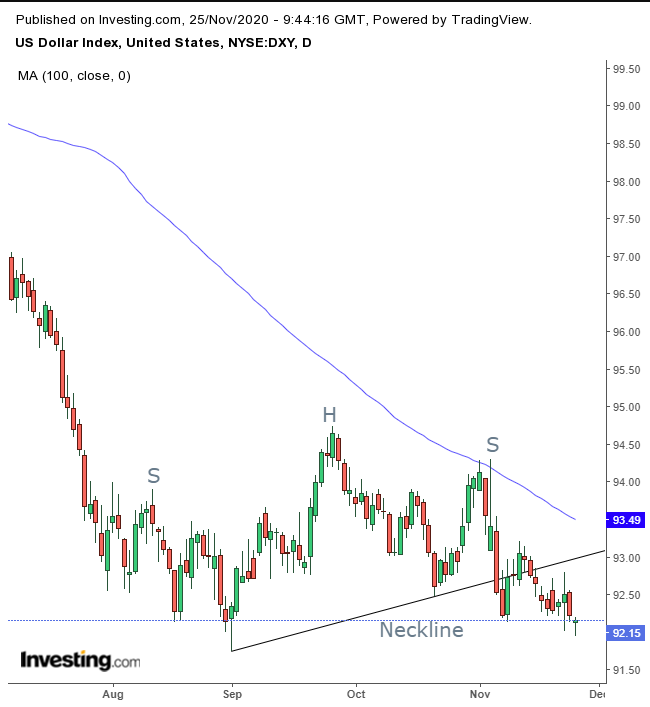
After the greenback completed a H&S continuation pattern, we expect it to resume its underlying downtrend.
The cautionary tone ahead of Wednesday's US economic releases, has spurred investors to add gold to their portfolios.
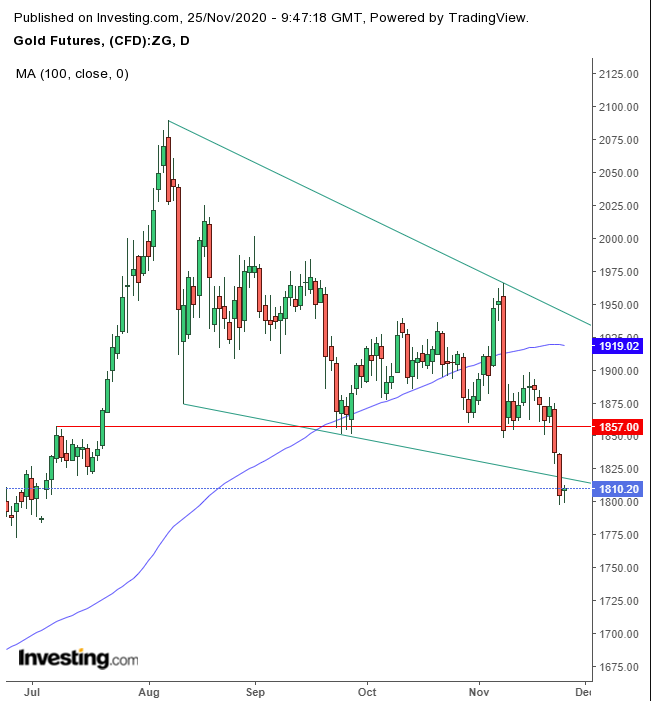
The precious metal's technical support may be the start of a return toward the top of what we initially thought was a bullish, falling wedge. However, as time goes on, it looks more like a bearish, falling channel. The $1,860 area (red line) seems now like an important support that may have been broken.
Bitcoin kept most of Tuesday’s gains, as the cryptocurrency remained above the $19,000 level, for the first time since December 2017.
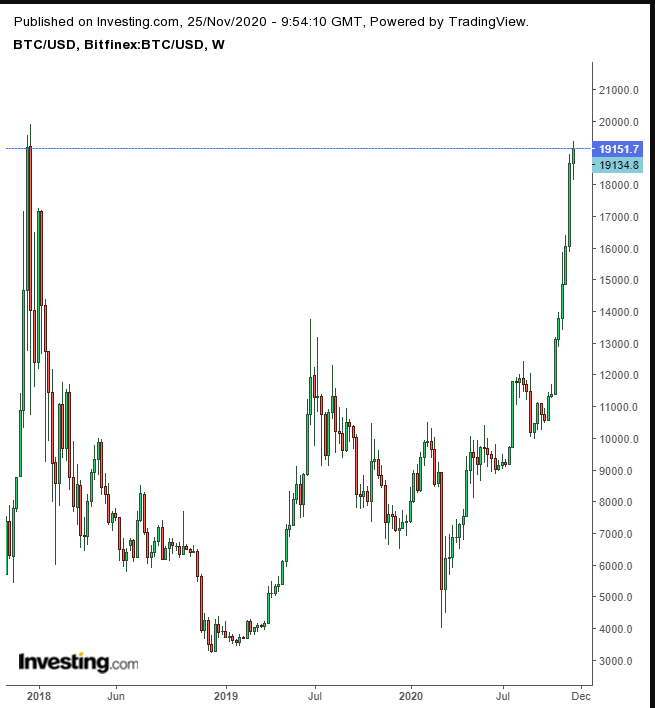
Tuesday's close of $19,134.80 came within a hair of the Dec. 16, 2017 record close of $19,187. While enthusiasts cheer the possibility of a new record, we urge caution as chasing the price is rarely a good idea. If this frenzy is driven by retail buyers, the moment their demand dries up, some violent whipsaws could occur.
Like other risk assets, oil’s exuberant rally cooled.
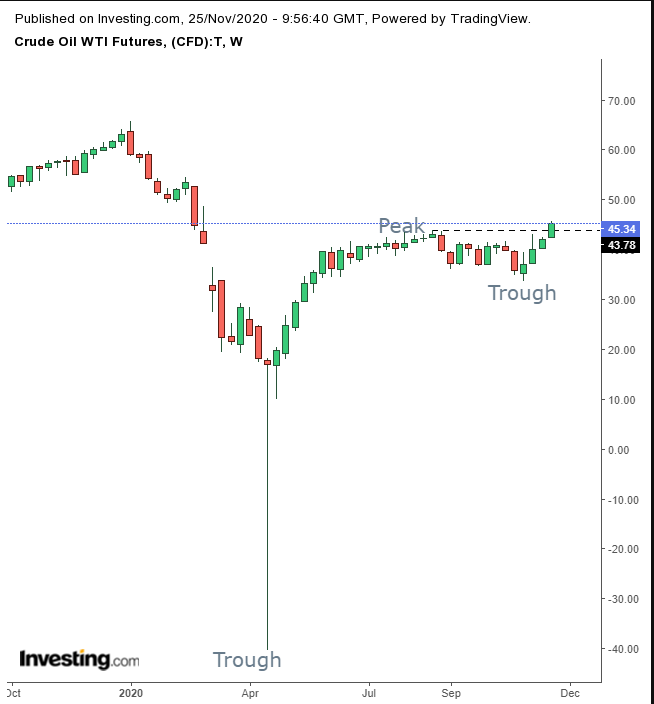
However, the price still managed to best the $45 level, posting the second, higher peak, required to establish an uptrend.
Copper kept all its gains after jumping to the highest level since 2014. The red metal is expected to come into high demand during a reviving economy.
Up Ahead
- On Wednesday, the minutes of the most recent Federal Open Market Committee will be released.
- US initial jobless claims, GDP and personal spending will also be published Wednesday.
- The US celebrates its Thanksgiving holiday on Thursday.
- The week ends with Black Friday, the traditional start of the U.S. holiday shopping season.
Market Moves
Stocks
- Futures on the S&P 500 Index gained 0.1%.
- The Stoxx Europe 600 Index increased 0.1%.
- The MSCI Asia Pacific Index was little changed.
- The MSCI Emerging Markets Index fell 0.3%.
Currencies
- The Dollar Index declined 0.1% to 92.13.
- The euro jumped 0.3% to $1.1926.
- The British pound increased 0.2% to $1.3379.
- The onshore yuan strengthened 0.2% to 6.58 per dollar.
- The Japanese yen strengthened 0.1% to 104.37 per dollar.
Bonds
- The yield on 10-year Treasuries was unchanged at 0.88%.
- The yield on two-year Treasuries was unchanged at 0.16%.
- Germany’s 10-year yield advanced one basis point to -0.56%.
- Britain’s 10-year yield jumped one basis point to 0.338%.
- Japan’s 10-year yield declined less than one basis point to 0.021%.
Commodities
- West Texas Intermediate crude increased 1.3% to $45.50 a barrel.
- Brent crude gained 1.5% to $48.58 a barrel.
- Gold strengthened 0.3% to $1,812.82 an ounce.
